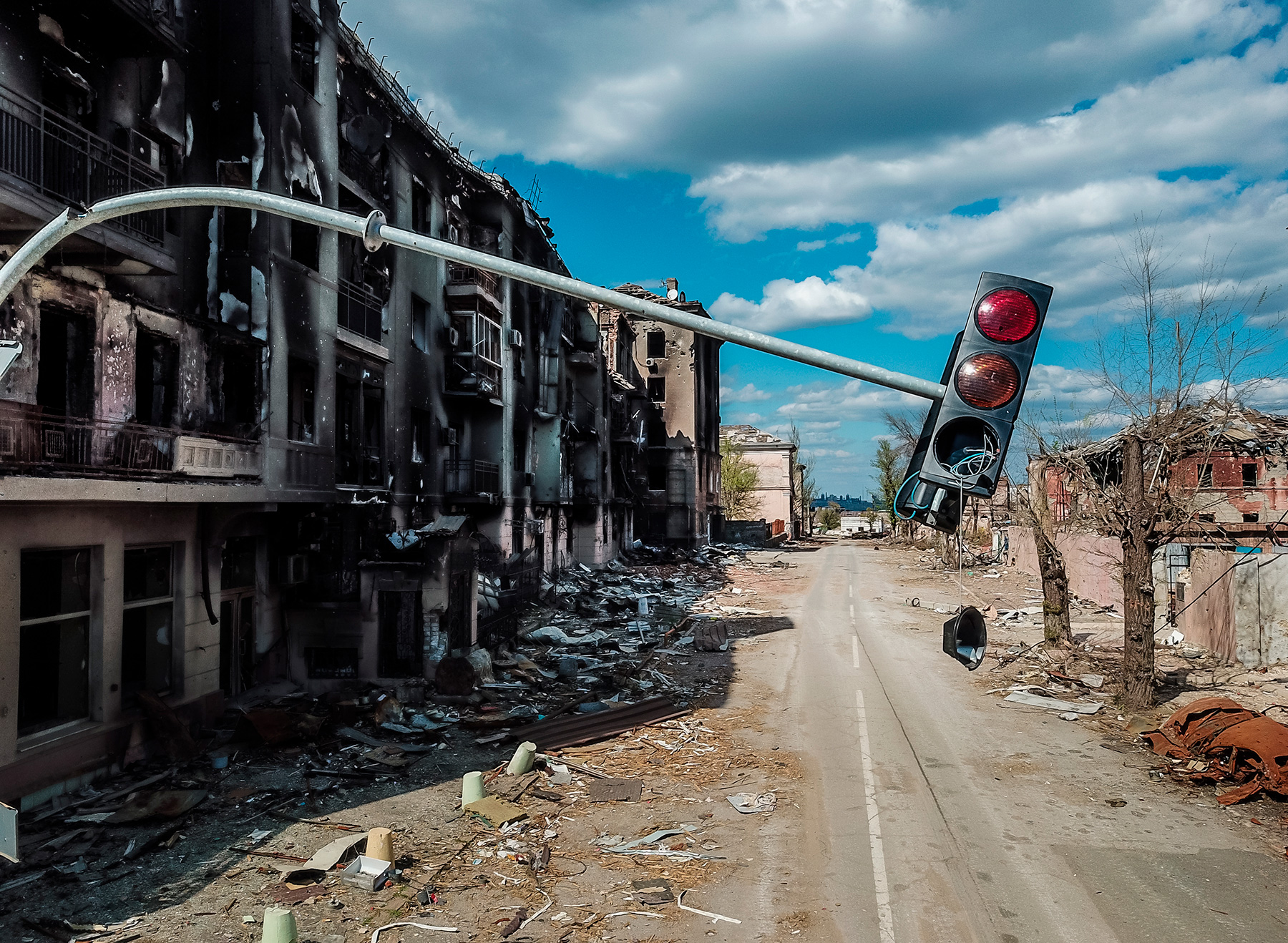Reflecting on Ukraine’s future beyond the current conflict, many politicians and experts speculate about the expediency of a new Marshall Plan for the country. Although the old Plan (officially known as the European Recovery Program) was designed and implemented by the Truman administration some three quarters of a century ago, it is still considered one of the most successful large-scale projects of post-conflict reconstruction. The experience still represents a certain value today. Leaving aside the political aspects of the U.S. aid program to Europe, which is a separate subject to discuss, we will confine ourselves to some relevant technical features of this initiative.
Apparently, foreign aid as such is unlikely to be the only or the main driver of the post-conflict development of the Ukrainian economy. Ukraine still needs to make decisive progress in such areas as combating corruption, the independence of the judiciary, and improving the quality of public administration at various levels. In other words, any potential Marshall Plan for Ukraine is not a substitute for still incomplete domestic reforms, but only one of the possible tools to facilitate them. But just as three-quarters of a century ago, large-scale government or international aid programs should stimulate private sector investment, both external and domestic.
Ukraine’s recovery will take a long time under any scenario for the end of the crisis. Thus, it is probably not quite correct to talk about “recovery”, because the task will not be to return to the old economic structure of the beginning of the century, but to create an entirely new economy, which could organically fit into the international (global, not just European) division of labor of the mid-21st century. In this process, the role of external sources of funding will be significant, although not decisive.
Reflecting on Ukraine’s future beyond the current conflict, many politicians and experts speculate about the expediency of a new Marshall Plan for the country. Although the old Plan (officially known as the European Recovery Program) was designed and implemented by the Truman administration some three quarters of a century ago, it is still considered one of the most successful large-scale projects of post-conflict reconstruction. The experience still represents a certain value today. Leaving aside the political aspects of the U.S. aid program to Europe, which is a separate subject to discuss, we will confine ourselves to some relevant technical features of this initiative.
First of all, it would be wrong to think of the Marshall Plan as some bottomless source of financial resources that poured by the United States into the economy of Western Europe. In 1948–1951, Washington invested in Europe just over $13 billion, which is about $115 to $150 billion at today’s rate. Recall that at the end of the summer the Ukrainian leadership estimated the needs for the post-conflict reconstruction of the country at $600–800 billion—by the results of the autumn hostilities with a lot of new damage inflicted upon the core economic infrastructure, these needs were to increase even more, measuring now in trillions of dollars.
Since financial resources under the Marshall Plan were distributed among 17 countries and territories, even the largest recipients did not receive much: Great Britain — 3.3 billion, France — 2.3 billion, West Germany — 1.4 billion, Italy — 1.2 billion, etc. Most of experts believe that the money received from the U.S. directly boosted the growth of European economies by about 0.5% per year on average. However, this does not mean that the Marshall Plan played a merely marginal role in the post-conflict reconstruction of Europe. The importance of the Plan was not so much in the absolute amount of aid, but rather in the fact that this mechanism helped launch the natural process of Europe’s economic revival, namely the recovery of the private sector, the accumulation of trade between European countries, the rise of national investment activity, and the establishment of new economic institutions. The Plan also acted as a kind of guarantee granted to European nations by the U.S. government, allowing the gateways to open for the flow of American FDIs into Western Europe. It also became a catalyst for the fast growth of domestic investments in most of participating countries.
Applied to the current situation, this suggests that foreign aid as such is unlikely to be the only or the main driver of the post-conflict development of the Ukrainian economy. Ukraine still needs to make decisive progress in such areas as combating corruption, the independence of the judiciary, and improving the quality of public administration at various levels. The challenge is to unleash the creative potential of the Ukrainian society and to make full use of the many comparative advantages that the nation can demonstrate integrating itself into European and global economies. In other words, any potential Marshall Plan for Ukraine is not a substitute for still incomplete domestic reforms, but only one of the possible tools to facilitate them. But just as three-quarters of a century ago, large-scale government or international aid programs should stimulate private sector investment, both external and domestic.
The source of funding for the reconstruction of Western Europe in the late 1940s – early 1950s was obvious, since the U.S. was at the peak of its economic and financial power and could therefore allocate 13 billion to European countries relatively painlessly. Moreover, a significant part of these resources was returned to the U.S. in the form of purchases of American goods and services by Europeans. Even in those days, though, Washington began to cut aid to European partners as soon as money was needed for the Korean War.
Today, the U.S. is burdened with much more serious financial problems, and one should no longer expect Washington to be that generous. Especially since the U.S. has already taken the lead in providing unprecedented military and technical assistance to Kiev. Given the importance of Ukraine to the states of the EU, it would be logical to assume that Brussels rather than Washington would be the main donor for a post-conflict Ukraine. However, today the financial standing of the European Union, including Germany as the main potential sponsor of the new Marshall Plan, leaves much to be desired.
Perhaps, architects of a new Plan could rely on the reserves of the Russian Central Bank, frozen by the West after February 24, 2022. Making a decisive move from freezing to confiscation is not yet possible, but it will probably be done in the end. However, there are many other contenders for these Russian funds. For example, countries that have sheltered Ukrainian refugees, as well as those most affected by the sanctions war with Moscow, would like to receive financial compensation. So, in fact, $300 billion of frozen Russian reserves is not a bottomless pit where you can get money at will. Even if all of this money ends up in Ukraine, it is not likely to cover all the costs of the post-conflict reconstruction.
Only in case of complete and unconditional surrender of the Kremlin could it be possible to pull significant funds from Russia to add to the declared level of $600–800 billion. Today, such a surrender does not look as a likely outcome of the conflict. However, if we assume a scenario of such surrender for a moment, we then have to conclude that a depleted and bloodless Russia, capitulated to the Collective West, simply won’t have the necessary resources it could promptly transfer to the reconstruction of Ukraine. Paying reparations has never been easy. For example, after the end of World War I, Germany could not pay its war debts to the victorious countries in full as late as the end of the Weimar Republic, and in 1933 the Third Reich simply unilaterally refused to pay any further reparations afterwards.
Apparently, Ukraine’s recovery will take a long time under any scenario for the end of the crisis. It might go faster in agriculture, in residential construction or in services, it is likely to go slower in heavy industry and in hi-tech. In the case of Ukraine, it is probably not quite correct to talk about “recovery”, because the task will not be to return to the old economic structure that the country had in the beginning of the century, but to create an entirely new economy, which could organically fit into the international (global, not just European) division of labor of the mid-21st century. In this process, the role of external sources of funding will be significant, although not decisive. Much more will depend on the strategic economic decisions made in Kyiv, as well as on the long-term vision that the European Union might or might not develop regarding a unique future role of Ukraine in the Forth Industrial Revolution, which is already sweeping across the continent.
Another feature of the Marshall Plan should be noted. The program was launched two years after the end of World War II, when not only the military actions in Europe were completely stopped, but the post-war European order was defined as a whole. If we draw an analogy with the present, a successful Marshall Plan for Ukraine can also be possible only once the conflict is over and when minimal stability is restored on the European continent. This, in turn, means that each new day of the conflict results in new human casualties and causes greater damage to the Ukrainian economy, pushing the prospect of the beginning of the post-conflict reconstruction farther away.






